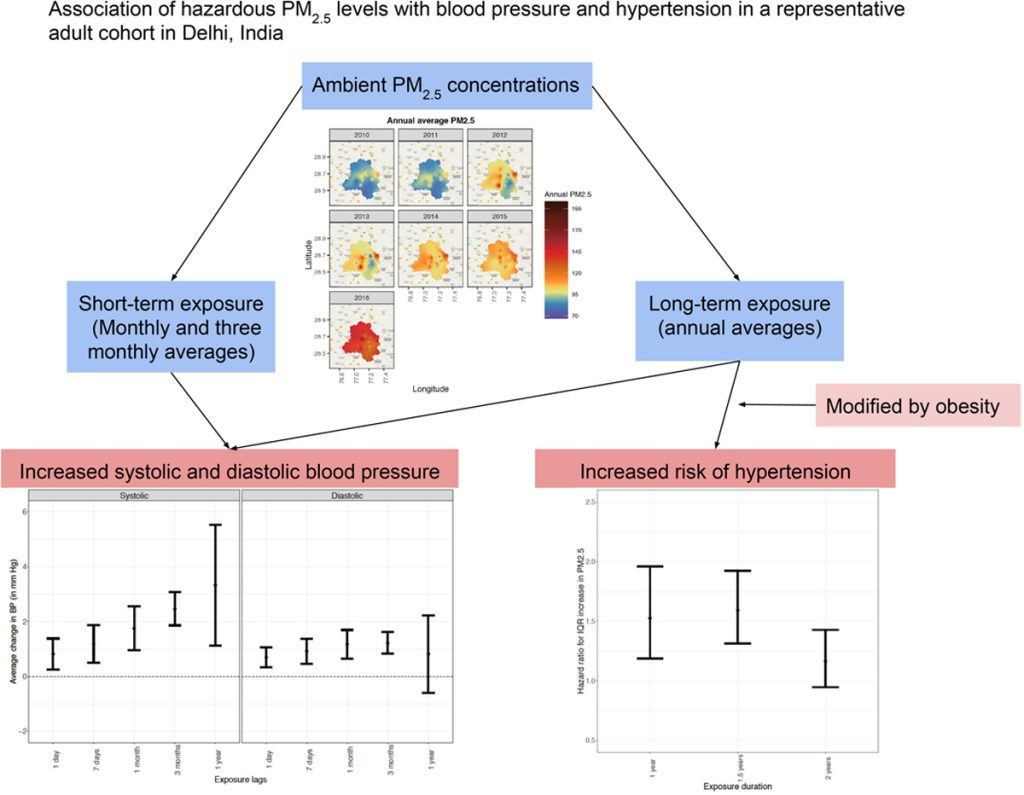Dorairaj Prabhakaran, Siddhartha Mandal, Bhargav Krishna, Melina Magsumbol, Kalpana Singh, Nikhil Tandon, K.M. Venkat Narayan, Roopa Shivashankar, Dimple Kondal, Mohammed K. Ali, Kolli Srinath Reddy, Joel D. Schwartz and GeoHealth Hub Study investigators, COE-CARRS Study investigators
Environmental Governance and Policy
| Hypertension |3 August 2020
Exposure to Particulate Matter Is Associated With Elevated Blood Pressure and Incident Hypertension in Urban India

Abstract
Ambient air pollution, specifically particulate matter of diameter <2.5 μm, is reportedly associated with cardiovascular disease risk. However, evidence linking particulate matter of diameter <2.5 μm and blood pressure (BP) is largely from cross-sectional studies and from settings with lower concentrations of particulate matter of diameter <2.5 μm, with exposures not accounting for myriad time-varying and other factors such as built environment. This study aimed to study the association between long- and short-term ambient particulate matter of diameter <2.5 μm exposure from a hybrid spatiotemporal model at 1-km×1-km spatial resolution with longitudinally measured systolic and diastolic BP and incident hypertension in 5342 participants from urban Delhi, India, within an ongoing representative urban adult cohort study. Median annual and monthly exposure at baseline was 92.1 μg/m3 (interquartile range, 87.6–95.7) and 82.4 μg/m3 (interquartile range, 68.4–107.0), respectively. We observed higher average systolic BP (1.77 mm Hg [95% CI, 0.97–2.56] and 3.33 mm Hg [95% CI, 1.12–5.52]) per interquartile range differences in monthly and annual exposures, respectively, after adjusting for covariates. Additionally, interquartile range differences in long-term exposures of 1, 1.5, and 2 years increased the risk of incident hypertension by 1.53× (95% CI, 1.19–1.96), 1.59× (95% CI, 1.31–1.92), and 1.16× (95% CI, 0.95–1.43), respectively. Observed effects were larger in individuals with higher waist-hip ratios. Our data strongly support a temporal association between high levels of ambient air pollution, higher systolic BP, and incident hypertension. Given that high BP is an important risk factor of cardiovascular disease, reducing ambient air pollution is likely to have meaningful clinical and public health benefits.
Read more

